Robert S Harper
age ~82
from New Orleans, LA
- Also known as:
-
- Robert J Harper
- Robert Sharper
- Phone and address:
-
4129 Palmyra St APT 4, New Orleans, LA 70119
(504)8225539
Robert Harper Phones & Addresses
- 4129 Palmyra St APT 4, New Orleans, LA 70119 • (504)8225539
- Manvel, TX
- Metairie, LA
- Washington, DC
- Memphis, TN
- Mandeville, LA
Lawyers & Attorneys

Robert C Harper Jr. - Lawyer
view sourceAddress:
Tege-Retired
(202)3163456 (Office)
(202)3163456 (Office)
Licenses:
Dist. of Columbia - Active 1977
Specialties:
Tax - 100%

Robert H Harper, Memphis TN - Lawyer
view sourceAddress:
6014 Wood Trail Dr, Memphis, TN 38120
Licenses:
Tennessee - Active 1991
Education:
University of Mississippi

Robert Payne Harper, New Orleans LA - Lawyer
view sourceAddress:
LA Supreme Court
Judicial Administrator's Office, New Orleans, LA 70130
(504)3102550 (Office)
Judicial Administrator's Office, New Orleans, LA 70130
(504)3102550 (Office)
Licenses:
Louisiana - Authorized to practice law 1998

Robert H Harper, Southaven MS - Lawyer
view sourceAddress:
Attorney At Law
5779 Getwell Rd Bldg B, Southaven, MS 38672
(901)2334766 (Office)
5779 Getwell Rd Bldg B, Southaven, MS 38672
(901)2334766 (Office)
Licenses:
Mississippi - Authorized to practice law 1980

Robert Harper - Lawyer
view sourceSpecialties:
Workers Compensation
ISLN:
1001238882
Admitted:
2022

Robert Harper - Lawyer
view sourceISLN:
906684281
Admitted:
1982
Law School:
University of Manitoba, LL.B., 1981

Robert Harper - Lawyer
view sourceSpecialties:
Inquests
Licensing and Disciplinary Tribunals
Personal Injuries
Professional Negligence
Torts
Transport Accident Commission
Work Cover/Comcare
Licensing and Disciplinary Tribunals
Personal Injuries
Professional Negligence
Torts
Transport Accident Commission
Work Cover/Comcare
ISLN:
922188961
Admitted:
1998
University:
LL.B.
License Records
Robert D Harper
License #:
8771 - Expired
Category:
Emergency Medical Care
Issued Date:
Dec 31, 1995
Effective Date:
Jul 19, 2005
Expiration Date:
Dec 31, 1998
Type:
EMT
Robert A Harper
License #:
6693 - Expired
Category:
Water Operator
Issued Date:
May 31, 2001
Effective Date:
May 31, 2001
Type:
Grade V Water Operator
Robert C Harper
License #:
518831 - Active
Category:
Health Care
Issued Date:
Mar 10, 2010
Effective Date:
Mar 10, 2010
Expiration Date:
Dec 1, 2018
Type:
Paramedic
Medicine Doctors

Dr. Robert G Harper, Houston TX - PHD
view sourceSpecialties:
Neuropsychology
Clinical Neuropsychology
Clinical Neuropsychology
Address:
1977 Butler Blvd Suite 400, Houston, TX 77030
(713)7983944 (Phone), (713)7983465 (Fax)
(713)7983944 (Phone), (713)7983465 (Fax)
Languages:
English

Robert M. Harper
view sourceSpecialties:
Dermatology
Work:
Marietta Dermatology & The Skin Cancer CenterMarietta Dermatology & Skin Cancer Center
111 Marble Ml Rd NW, Marietta, GA 30060
(770)4221013 (phone), (770)5145999 (fax)
111 Marble Ml Rd NW, Marietta, GA 30060
(770)4221013 (phone), (770)5145999 (fax)
Education:
Medical School
Medical College of Georgia School of Medicine
Graduated: 1979
Medical College of Georgia School of Medicine
Graduated: 1979
Procedures:
Destruction of Benign/Premalignant Skin Lesions
Destruction of Skin Lesions
Skin Surgery
Skin Tags Removal
Destruction of Skin Lesions
Skin Surgery
Skin Tags Removal
Conditions:
Melanoma
Rosacea
Skin Cancer
Tinea Pedis
Varicose Veins
Rosacea
Skin Cancer
Tinea Pedis
Varicose Veins
Languages:
English
Description:
Dr. Harper graduated from the Medical College of Georgia School of Medicine in 1979. He works in Marietta, GA and specializes in Dermatology. Dr. Harper is affiliated with Northside Hospital-Cherokee and Wellstar Kennestone Regional Medical Center.

Robert E. Harper
view sourceSpecialties:
Obstetrics & Gynecology
Work:
Green Clinic LLC
1200 S Farmerville St, Ruston, LA 71270
(318)2553690 (phone), (318)2516388 (fax)
1200 S Farmerville St, Ruston, LA 71270
(318)2553690 (phone), (318)2516388 (fax)
Education:
Medical School
Louisiana State University School of Medicine at Shreveport
Graduated: 1973
Louisiana State University School of Medicine at Shreveport
Graduated: 1973
Procedures:
Cesarean Section (C-Section)
Colposcopy
D & C Dilation and Curettage
Hysterectomy
Myomectomy
Ovarian Surgery
Tubal Surgery
Vaccine Administration
Vaginal Delivery
Vaginal Repair
Colposcopy
D & C Dilation and Curettage
Hysterectomy
Myomectomy
Ovarian Surgery
Tubal Surgery
Vaccine Administration
Vaginal Delivery
Vaginal Repair
Conditions:
Abnormal Vaginal Bleeding
Breast Disorders
Candidiasis of Vulva and Vagina
Complicating Pregnancy or Childbirth
Conditions of Pregnancy and Delivery
Breast Disorders
Candidiasis of Vulva and Vagina
Complicating Pregnancy or Childbirth
Conditions of Pregnancy and Delivery
Languages:
English
Description:
Dr. Harper graduated from the Louisiana State University School of Medicine at Shreveport in 1973. He works in Ruston, LA and specializes in Obstetrics & Gynecology.

Robert W. Harper Ii
view sourceSpecialties:
Internal Medicine, Diabetes
Work:
University Medical Group Hospitalist Team
1350 Walton Way FL 3, Augusta, GA 30901
(706)7745795 (phone), (706)7748922 (fax)
1350 Walton Way FL 3, Augusta, GA 30901
(706)7745795 (phone), (706)7748922 (fax)
Education:
Medical School
University of South Florida College of Medicine at Tampa
Graduated: 1977
University of South Florida College of Medicine at Tampa
Graduated: 1977
Procedures:
Electrocardiogram (EKG or ECG)
Conditions:
Abdominal Hernia
Abnormal Vaginal Bleeding
Acute Bronchitis
Acute Myocardial Infarction (AMI)
Acute Pancreatitis
Abnormal Vaginal Bleeding
Acute Bronchitis
Acute Myocardial Infarction (AMI)
Acute Pancreatitis
Languages:
English
Description:
Dr. Harper II graduated from the University of South Florida College of Medicine at Tampa in 1977. He works in Augusta, GA and specializes in Internal Medicine and Diabetes. Dr. Harper II is affiliated with University Hospital.

Robert Douglas Harper
view sourceSpecialties:
Orthopaedic Surgery
Orthopaedic Surgery of the Hand
Sports Medicine
Surgery of the Hand
Orthopaedic Surgery of the Hand
Sports Medicine
Surgery of the Hand
Education:
The University of Texas at Houston (1976)

Robert Andrew Harper
view sourceSpecialties:
Psychiatry
Child & Adolescent Psychiatry
Child Psychiatry
Child & Adolescent Psychiatry
Child Psychiatry
Education:
The University of Texas at Houston (1984)

Robert Straube Harper
view sourceSpecialties:
Pathology
Anatomic Pathology & Clinical Pathology
Anatomic Pathology
Clinical Pathology
Anatomic Pathology & Clinical Pathology
Anatomic Pathology
Clinical Pathology
Education:
University of Pennsylvania(1955)
Name / Title
Company / Classification
Phones & Addresses
Owner
RC Harper's Tree & Properties Service
Harper's Tree & Properties Service
Tree Service
Harper's Tree & Properties Service
Tree Service
60 Cartier Street, Suite 411, Ottawa, ON K2P 2E1
(613)2384056
(613)2384056
President
Commerce Court Condominiums
Operators of Nonresidential Buildings
Operators of Nonresidential Buildings
Po Box 6275, Metairie, LA 70009
Survey Statistician Petroleum Division
United States Dept of Energy
Administration of General Economic Programs
Administration of General Economic Programs
1000 Independence Ave Sw, Washington, DC 20585
Engineer
Library of Congress
Libraries
Libraries
101 Independence Ave Se, Washington, DC 20540
Owner
RC Harper's Tree & Properties Service
Tree Service
Tree Service
(613)2384056
Principal
V&B Homes Inc
Residential Construction
Residential Construction
2209 N Palm Ct, Pasadena, TX 77502
Principal
Harper Management Group
Management Services
Management Services
6208 Ivanhoe Cv, Memphis, TN 38134
Principal
U Save Electric
Media Production · Electrical Contractor · Electrician
Media Production · Electrical Contractor · Electrician
5721 Joan Ln, Temple Hills, MD 20748
(301)6301281
(301)6301281
Wikipedia References

Robert Harper
Work:
Company:
Carnegie Mellon University faculty
Position:Computer scientist
Education:
Academic degree:
Professor
Skills & Activities:
Ascribed status:
Fellow of the Association for Computing Machinery
Skill:Programming languages • Computer science

Robert Harper (Computer Scientist)

Robert Harper (Cricketer)
Isbn (Books And Publications)








Resumes

Robert Harper Fredericksburg, VA
view sourceWork:
Professional Building Maintenance
May 2014 to 2000
Certified Carpet Tech E-Tron Systems Inc
Lorton, VA
Oct 2012 to Jan 2013
Support Staff Supervisor Marine Corps Community Services
Havelock, NC
Mar 2009 to Jun 2010
Assistant Sports Facility Programmer Vintrust Wine Inc
Canyon, CA
Apr 2008 to Nov 2009
Warehouse worker Coastal Enterprises, Inc
Jacksonville, NC
May 2006 to Feb 2008
Mess Attendant Marine Corps Base Quantico
Quantico, VA
Mar 2005 to May 2006
Night Stocker/Warehouse Worker
May 2014 to 2000
Certified Carpet Tech E-Tron Systems Inc
Lorton, VA
Oct 2012 to Jan 2013
Support Staff Supervisor Marine Corps Community Services
Havelock, NC
Mar 2009 to Jun 2010
Assistant Sports Facility Programmer Vintrust Wine Inc
Canyon, CA
Apr 2008 to Nov 2009
Warehouse worker Coastal Enterprises, Inc
Jacksonville, NC
May 2006 to Feb 2008
Mess Attendant Marine Corps Base Quantico
Quantico, VA
Mar 2005 to May 2006
Night Stocker/Warehouse Worker
Education:
Forest Park High School Woodbridge
Woodbridge, VA
Jun 2003
Diploma
Woodbridge, VA
Jun 2003
Diploma

Robert Harper Memphis, TN
view sourceWork:
Hyde Park Community Development Corporation
Oct 2012 to 2000
Executive Director Independent Officials Association
Jan 2007 to 2000
Basketball Official Southbrook Properties Inc
Memphis, TN
Oct 2010 to Nov 2011
Consultant Promise Academy Charter School
Memphis, TN
Aug 2009 to Aug 2010
Kindergarten Teacher
Oct 2012 to 2000
Executive Director Independent Officials Association
Jan 2007 to 2000
Basketball Official Southbrook Properties Inc
Memphis, TN
Oct 2010 to Nov 2011
Consultant Promise Academy Charter School
Memphis, TN
Aug 2009 to Aug 2010
Kindergarten Teacher
Education:
University of Memphis
Memphis, TN
2014
M.A. in City and Regional Planning Morehouse College
Atlanta, GA
May 2006
B.A. in Political Science Morehouse College Chapter of Bonner Scholars
2005
Memphis, TN
2014
M.A. in City and Regional Planning Morehouse College
Atlanta, GA
May 2006
B.A. in Political Science Morehouse College Chapter of Bonner Scholars
2005

Robert Harper
view sourceWork:
Self-employed, Jacksonville
2010 to 2000
IT Consultant, Support Specialist U.S. Army, Jacksonville
2004 to 2012
Human Resources Specialist U.S. Army, Jacksonville
2006 to 2009
Service Advocate III U.S. Army, Jacksonville
2004 to 2006
Career Specialist
2010 to 2000
IT Consultant, Support Specialist U.S. Army, Jacksonville
2004 to 2012
Human Resources Specialist U.S. Army, Jacksonville
2006 to 2009
Service Advocate III U.S. Army, Jacksonville
2004 to 2006
Career Specialist
Education:
Florida State College at Jacksonville
2012 to 2000
Bachelor of Science in Business Administration
2012 to 2000
Bachelor of Science in Business Administration

Robert Harper Memphis, TN
view sourceWork:
Promise Academy Charter School
Memphis, TN
Aug 2009 to Aug 2010
Kindergarten Teacher Memphis Urban Systemic Initiative
Memphis, TN
Jun 2008 to Jun 2009
Program Leader Memphis City Schools
Memphis, TN
Aug 2007 to May 2008
Substitute Teacher S&K Menswear
Southaven, MS
Jan 2007 to Jun 2007
Sales Manager
Memphis, TN
Aug 2009 to Aug 2010
Kindergarten Teacher Memphis Urban Systemic Initiative
Memphis, TN
Jun 2008 to Jun 2009
Program Leader Memphis City Schools
Memphis, TN
Aug 2007 to May 2008
Substitute Teacher S&K Menswear
Southaven, MS
Jan 2007 to Jun 2007
Sales Manager
Education:
Morehouse College
Atlanta, GA
May 2006
B.A. in Political Science Who's Who Among American College Students
Atlanta, GA
May 2006
B.A. in Political Science Who's Who Among American College Students

Robert Harper Houston, TX
view sourceWork:
Medical Management Systems
Houston, TX
2004 to 2010
Office Manager Silver Star/Champion Security
Houston, TX
2003 to 2004
Part time Security Field Supervisor Information Tech, Elpaso Energy
Houston, TX
2000 to 2003
Senior Analyst US Air Force
Houston, TX
Jul 2000 to Jun 2002
Airman PG&E Energy Trading
Houston, TX
Sep 1997 to May 2000
Senior Analyst - Information Technology PG&E Energy Trading
Houston, TX
1998 to 2000
Market Data Systems Analyst PG&E Gas Transmissions
Houston, TX
1997 to 1998
Desktop Support Continental Airlines
Houston, TX
Jun 1996 to Sep 1997
Customer Service Agent Continental Airlines
Houston, TX
Mar 1996 to Sep 1997
Customer Service Agent Continental Airlines
Houston, TX
1996 to 1997
Customer Services Agent Software Support
Houston, TX
1996 to 1997
Customer Support Representative - Lead Technician Continental Airlines
Pasadena, TX
1988 to 1995
Plant Technician
Houston, TX
2004 to 2010
Office Manager Silver Star/Champion Security
Houston, TX
2003 to 2004
Part time Security Field Supervisor Information Tech, Elpaso Energy
Houston, TX
2000 to 2003
Senior Analyst US Air Force
Houston, TX
Jul 2000 to Jun 2002
Airman PG&E Energy Trading
Houston, TX
Sep 1997 to May 2000
Senior Analyst - Information Technology PG&E Energy Trading
Houston, TX
1998 to 2000
Market Data Systems Analyst PG&E Gas Transmissions
Houston, TX
1997 to 1998
Desktop Support Continental Airlines
Houston, TX
Jun 1996 to Sep 1997
Customer Service Agent Continental Airlines
Houston, TX
Mar 1996 to Sep 1997
Customer Service Agent Continental Airlines
Houston, TX
1996 to 1997
Customer Services Agent Software Support
Houston, TX
1996 to 1997
Customer Support Representative - Lead Technician Continental Airlines
Pasadena, TX
1988 to 1995
Plant Technician
Education:
Mississippi County Community College
Blytheville, AR
1978
Business Management Certification Clark School of Business
Topeka, KS
1975
two year in Business Management
Blytheville, AR
1978
Business Management Certification Clark School of Business
Topeka, KS
1975
two year in Business Management
Us Patents
-
Process For Flameproofing Cellulosic Fibers Prior To Dyeing
view source -
US Patent:47657960, Aug 23, 1988
-
Filed:Jul 20, 1987
-
Appl. No.:7/075169
-
Inventors:Robert J. Harper - Metairie LA
John V. Beninate - New Orleans LA -
Assignee:The United States of America as represented by the Secretary of
Agriculture - Washington DC -
International Classification:D06M 900
D06P 500 -
US Classification:81157
-
Abstract:Cellulosic fabric is dyed by affixing a hydroxymethyl phosphonium-nitrogen based polymer to the fabric and thereafter dyeing it with a cotton dye having anionic groups, in an acidic or neutral environment. In addition, a new method of affixing the polymer to the fabric is provided comprising contacting the fabric with a solution of urea and a precondensate of urea and tetrakis hydroxymethyl phosphonium salt.
-
Radiation-Resistant Fluoroaromatic Cellulosic Ethers
view source -
US Patent:43625274, Dec 7, 1982
-
Filed:Jan 4, 1982
-
Appl. No.:6/337045
-
Inventors:Robert J. Harper - Metairie LA
-
Assignee:The United States of America as represented by the Secretary of
Agriculture - Washington DC -
International Classification:D06M 1308
-
US Classification:8194
-
Abstract:A process for improving the radiation resistance of cellulosic fabrics is disclosed. Fabric is immersed first in a 23% caustic solution for 15 minutes and then in a 5% caustic solution for 15 minutes. The excess caustic is removed and the fabric padded to 105% wet-pickup using neutralized pentafluorobenzoic acid. The fabric is then cured at 130. degree. -140. degree. C. for 6-8 minutes.
-
Process For Producing Smooth-Dry Cellulosic Fabric With Durable Softness And Dyeability Properties
view source -
US Patent:47432667, May 10, 1988
-
Filed:Sep 9, 1986
-
Appl. No.:6/905208
-
Inventors:Robert J. Harper - Metairie LA
-
Assignee:The United States of America as represented by the Secretary of
Agriculture - Washington DC -
International Classification:D06P 500
D06M 1334 -
US Classification:8181
-
Abstract:Process for producing smooth dry-cellulose containing fabrics with durable softness and dyeable properties are disclosed. Cellulose containing fabric is treated with a solution of crosslinking agent, acid catalyst and a longchain alkyl bishydroxyethyl quaternary amine salt additive. The resultant fabric is smooth-dry durably softened and can be dyed. Printdyeing is accomplished by selective application of the alkyl quaternary to a fabric padded with a crosslinking agent. This treatment is then followed by curing and dyeing. Differential dyeing is accomplished by first treating separate yarns with different solutions containing crosslinking agent with and without the alkyl quaternary, drying, knitting, curing and then dyeing the knitted fabric. Multicolored crossdyed cellulosic fabrics which are partly crosslinked are produced by crosslinking preselected areas of fabric with a grafted cationic group and leaving other areas untreated; immersing the fabric in an acidic anionic dyebath to dye the cationic areas and then immersing in a different colored alkaline, reactive dyestuff dyebath to dye the untreated areas.
-
Bis(Dihydroxymethyloxoimidazolidinyl)Alkanes
view source -
US Patent:42987474, Nov 3, 1981
-
Filed:Aug 25, 1980
-
Appl. No.:6/180544
-
Inventors:John G. Frick - New Orleans LA
Robert J. Harper - Metairie LA -
Assignee:The United States of America as represented by the Secretary of
Agriculture - Washington DC -
International Classification:C07D23340
-
US Classification:548318
-
Abstract:New compounds in the class of. alpha. ,. omega. -bis(4,5-dihydroxy-3-methyl-2-oxoimidazolidin-1-yl)alkanes have been prepared from the reaction of glyoxal and an alkylenebis(3-methylurea). These compounds are useful as formaldehyde-free finishing agents for textiles containing cellulose.
-
Process For Producing Transfer Printed Cotton And Cotton Blends
view source -
US Patent:42368901, Dec 2, 1980
-
Filed:Jun 7, 1978
-
Appl. No.:5/913418
-
Inventors:Eugene J. Blanchard - New Orleans LA
Gloria A. Gautreaux - Metairie LA
Robert J. Harper - Metairie LA -
Assignee:The United States of America as represented by the Secretary of
Agriculture - Washington DC -
International Classification:D06P 116
D06P 158
D06P 360
D06P 384 -
US Classification:8 25A
-
Abstract:A pretreatment system composed of hexamethoxymethyl melamine, p-toluene sulfonic acid, 2-amino-2-methyl-1-propanol, triethylamine, butoxy triglycol, and carboxy vinyl polymeric thickener is disclosed, which through application to the fabric surface by a screen printing technique is highly effective in improving the affinity of cellulose-containing textiles for disperse dyestuffs. Fabrics with prints that are durable to washing are produced by simultaneously heat transfer printing and curing at about 190. degree. C. to 220. degree. C. for 20-30 seconds.
-
Method Of Imparting Smolder Resistance To Cotton-Containing Textiles
view source -
US Patent:42808120, Jul 28, 1981
-
Filed:Mar 21, 1980
-
Appl. No.:6/132594
-
Inventors:Darrell J. Donaldson - Metairie LA
Robert J. Harper - Metairie LA -
Assignee:The United States of America as represented by the Secretary of
Agriculture - Washington DC -
International Classification:D06M 100
-
US Classification:8116P
-
Abstract:Smolder resistance is imparted to cotton and cotton-containing fabrics by applying a certain boron-nitrogen-phosphorus system to the fabric, employing conventional equipment. An inorganic boron compound is placed in solution with a phosphorus-containing compound, then a nitrogen-containing compound is added. The aqueous mixture is applied using conventional textile equipment, dried, and cured by standard methods.
-
Knitted Cotton Fabric Durably Patterned By Differential Shrinkage
view source -
US Patent:41054032, Aug 8, 1978
-
Filed:May 7, 1976
-
Appl. No.:5/684127
-
Inventors:Bethlehem K. Andrews - New Orleans LA
Robert J. Harper - Metairie LA
Norton A. Cashen - Metairie LA -
Assignee:The United States of America as represented by the Secretary of
Agriculture - Washington DC -
International Classification:D06Q 102
-
US Classification:8115
-
Abstract:To the surface of knitted cotton fabrics is applied from 20 to 90% wet add-on of crosslinking agent in a novel geometric pattern by any of several techniques including kiss-roll padding, printing, or transferring the solution of crosslinking agent from impregnated material to the surface of the knitted fabric, followed by drying and curing the moist textile at elevated temperatures, and finally by washing the cured fabric to effect differential shrinkage of the fabric in the applied design, which novel shrinkage in the fabric is fixed through the life of the fabric and is stable through subsequent launderings.
-
Process To Impart Smooth-Dry And Flame Retardant Properties To Synthetic-Cellulosic Blended Fabrics
view source -
US Patent:46185127, Oct 21, 1986
-
Filed:Jun 28, 1985
-
Appl. No.:6/749905
-
Inventors:Robert J. Harper - Metairie LA
-
Assignee:The United States of America as represented by the Secretary of
Agriculture - Washington DC -
International Classification:B05D 302
D06M 1334 -
US Classification:427381
-
Abstract:Synthetic-cellulosic blended fabric is padded with a solution of nitrogen rich N-methylol crosslinking agent, acid catalyst, antimony oxide and a halogen containing alcohol; dried at about 140. degree. -190. degree. F. and then cured at about 250. degree. -400. degree. F. for sufficient time to impart smooth-dry and flame retardant properties to the fabric. Aqueous polyethylene or silicone emulsion softeners can be added to the padding solution if desired. Dibromoneopentyl glycol makes an exemplary halogen containing alcohol. The process can be varied to first pad with antimony oxide, dry, and then repad with a solution of: nitrogen rich N-methylol crosslinking agent, acid catalyst, and a halogen containing alcohol, dry again and cure, at the above specified temperatures.
Plaxo

Robert Harper
view sourceVancouver, BCChief Financial Oficer at Yellowhead Mining Inc.

Robert Harper
view sourceHarper & Associates

Robert Harper
view sourceLos Angeles, CA, USA

Robert Harper
view sourceAbove Average

Robert Harper
view sourceForward Management

Robert Harper
view sourceHuntington, WVStore manager at VALUE CITY DEPT STORE
Myspace
Flickr

Robert Anthony Harper
view source
Robert DafreestylekingofV...
view source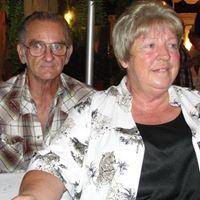
Robert Elaine Harper
view source
Robert Harper III
view source
Robert Harper
view source
Robert Harper
view source
Thomas Robert Harper
view source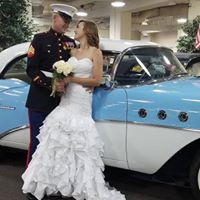
Ty Robert Harper
view sourceClassmates

Robert Harper
view sourceSchools:
Early County High School Blakely GA 1980-1984
Community:
Kelita Wright

Robert Harper
view sourceSchools:
University of Alabama Tuscaloosa AL 1975-1979
Community:
Mike Wilhite, Yvonne Jackson, Trygve Peterson

Robert Harper
view sourceSchools:
Christiansburg Middle School Christiansburg VA 1977-1979
Community:
James Ashworth

Robert Harper
view sourceSchools:
Capital City Baptist School Jackson MS 1978-1982
Community:
Beth Moorhead, Liz Murphy, Christine Shufelt, Candy Fulghum, Dana Gann, Karl Falster

Robert Harper
view sourceSchools:
Kesling Middle School La Porte IN 1990-2000
Community:
John Bodmer, Scott Padgett, Stanley Evans, Jeanie Lower, Tyler Woods

Robert Harper
view sourceSchools:
George Washington Middle School Indianapolis IN 2000-2004
Community:
Darlene Barnett, Tammy Mcmurtrey, Judy Minor, Carl Morgan

Robert Harper
view sourceSchools:
Dalhousie Regional Complex High School Dalhousie NB 1957-1961
Community:
Christen Petersen, Ronald Bernard, Drapeau Drapeau

Robert Harper
view sourceSchools:
Campbellton High School Campbellton NB 1963-1967
Community:
Maxine Macmillan, Dan Gray, Fearon Currie, Marjorie Murray, Lynne Fitzgerald
Googleplus

Robert Harper
Work:
Smog - Tech
Education:
Vissions in edu.
Tagline:
Sup google
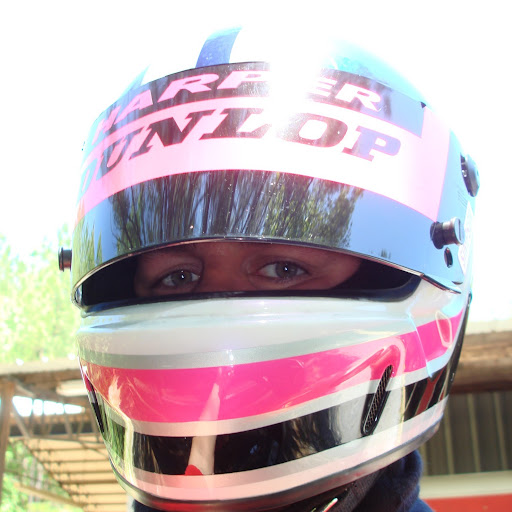
Robert Harper
Education:
University of Alabama at Birmingham ( UAB ) - Bachelor of Science - Psychology
Relationship:
Single
About:
Racer, Gentleman, Connectitude, Possimpible.
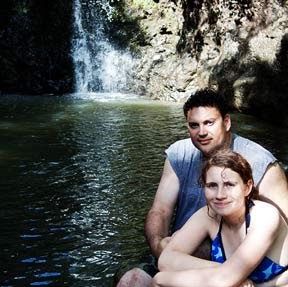
Robert Harper
Work:
Reflections Glass - Project Manager
Ashley Glass - Glazier (1996-2007)
Ashley Glass - Glazier (1996-2007)
Tagline:
It's another wonderful day in paradise!

Robert Harper
Work:
Retired
Education:
University of Central Florida
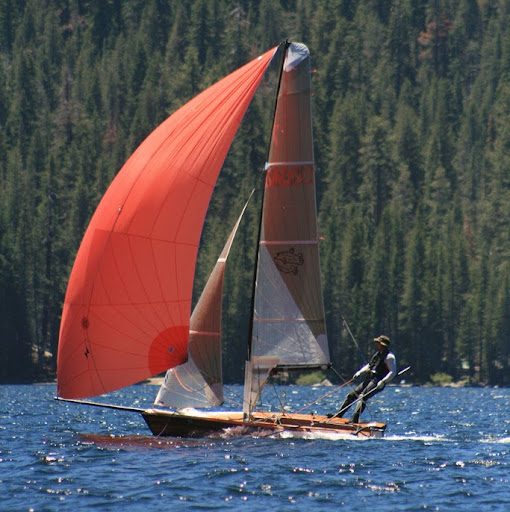
Robert Harper
Work:
Information Access Technology, Inc. - Senior Programmer

Robert Harper
Work:
Advanced Technology Services

Robert Harper
Education:
Humboldt University of Berlin

Robert Harper
Youtube
Get Report for Robert S Harper from New Orleans, LA, age ~82


















![Computational Type Theory [1/5] - Robert Harper - ... Computational Type Theory [1/5] - Robert Harper - ...](https://i.ytimg.com/vi/LE0SSLizYUI/hqdefault.jpg?sqp=-oaymwEcCOADEI4CSFXyq4qpAw4IARUAAIhCGAFwAcABBg==&rs=AOn4CLAaW-jiNcLcXJIZovdcLKqDbq5WHw)


